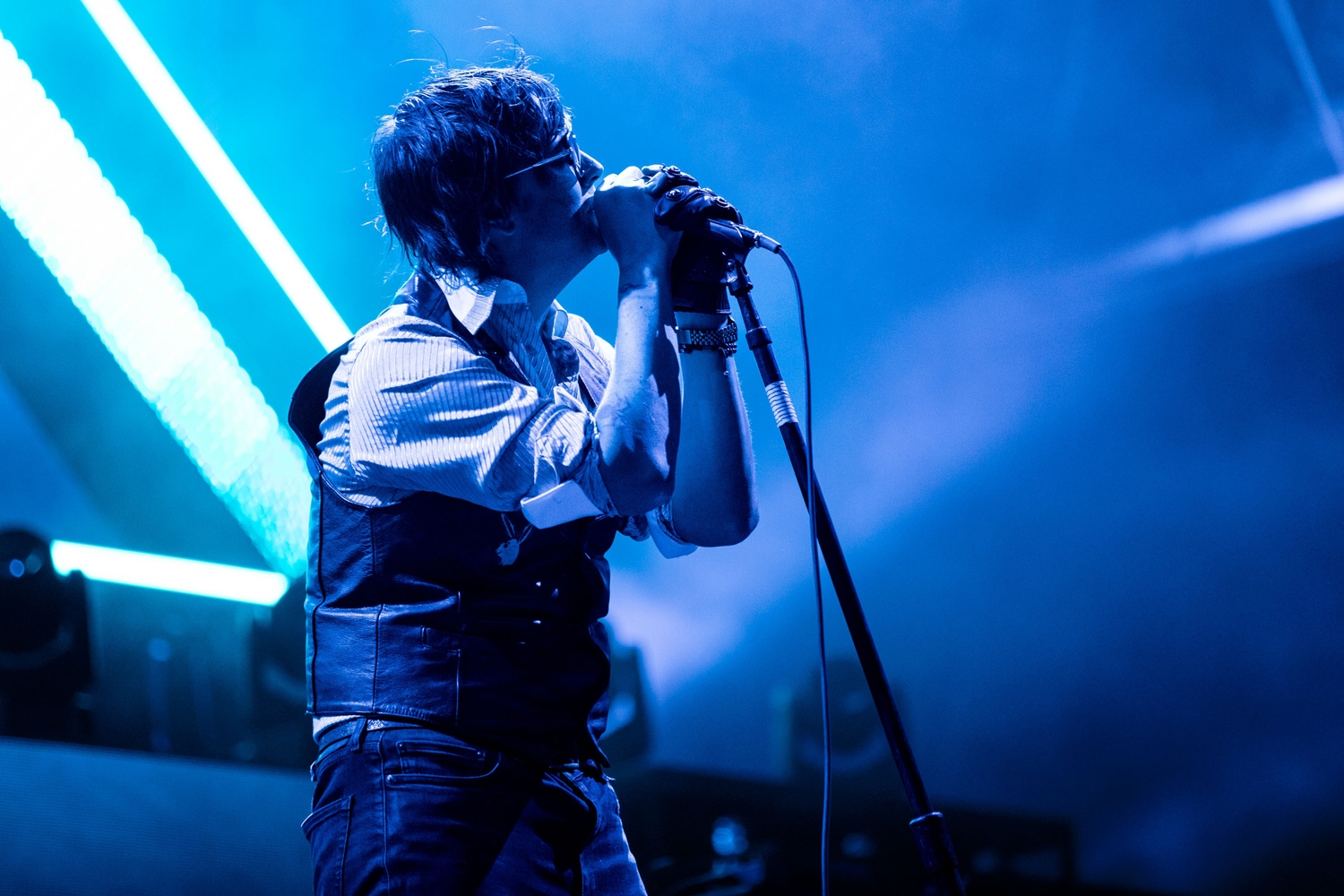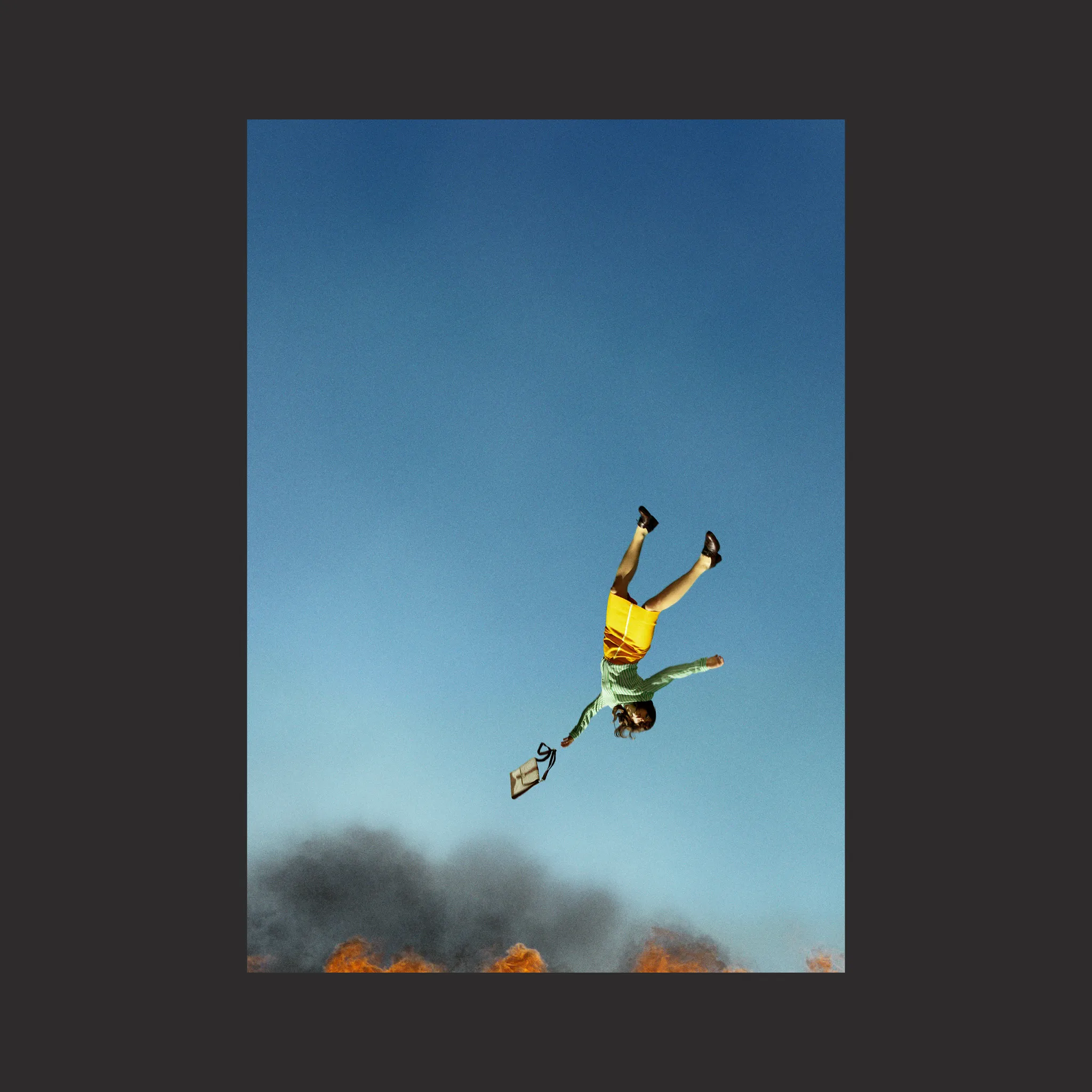Hall of Fame SSION, on art-rock and creating the cover for Yeah Yeah Yeahs’ ‘Fever To Tell’
Art-punk musician and all-round creative SSION tells us the story behind the Yeah Yeah Yeahs’ iconic debut artwork.
Formed out of the dregs of Karen O and Nick Zinner’s first band Unitard, the Yeah Yeah Yeahs sprung up from Williamsburg in Brooklyn in 2000, and went careering against po-faced indie with a vengeance. Influenced by the weird, and often chaotic avant-garde groups Karen O saw playing while attending Oberlin College in Ohio - a place she says was filled with outsiders - Yeah Yeah Yeahs directly set out to react against what they saw as a stale music scene. “There was a plateau of really banal New York rock, and everyone there was so cynical about performing,” the band told The Guardian in 2006. “Our idea was to strike that indifference down, to shake things up a bit.”
SSION - the creative project of director, musician and artist Cody Critcheloe - was another outsider
arriving in the city, and he found himself right in the thick of it all when Yeah Yeah Yeahs first
started to gain unstoppable traction. SSION has since directed music videos for
Kylie Minogue,
Peaches and Gossip, and he recently took the helm on Perfume Genius’ promo for ‘Queen’. Back in
2002, though, he was a 19 year old student from Kansas City visiting New York for a semester;
“this sorta hick in New York, literally carrying round a backpack full of VHS tapes with all my
stop-motion animations to give out to people.”
SSION wasn’t in Kansas anymore, and he soon fell in with New York’s crowd of art-punk
aficionados. After befriending Angus Andrew of electronic experimentalists Liars, while playing a
basement show in Columbia, Missouri, SSION met Karen O in New York, and ended up handing
her one of his VHS tapes. The pair became friends, and her and Angus would “sporadically come
round, to go and see rock bands play.”
Critcheloe gradually became more involved with the band, and while he was still studying in New York, supported Yeah Yeah Yeahs at a homecoming show. The band were back from playing with the Jon Spencer Blues Explosion on their US tour, and SSION infamously came on stage for his support slot holding a homemade effigy of Tori Amos, filled with fake blood. It was an endeavor the band enthusiastically encouraged. “There was blood – fake blood – everywhere,” he laughs, recounting. “They [Yeah Yeah Yeahs] were really into it, and we got it all over their equipment, but they didn’t care. I doubt that would happen now! I mean, it was a bunch of A&R people in the audience, hoping to sign them, and we were there, doing performance art, but not really. The music was more aligned to Pussy Galore or something,” he cackles. “That is true.”
He soon finished up with his art programme, though, and returned home to finish school. He’d been
sending sketches and initial ideas over to the band for one-off single releases, and out of the blue
Karen O got in touch and asked SSION to design the artwork for ‘Fever To Tell’. He agreed in
about two seconds flat. “I was just a huge fan,” he laughs. “That’s all. I loved the music, and I really
wanted to do something like that. It was crazy, because I got back [to Kansas City] and no-one had
really heard of Yeah Yeah Yeahs, especially not in Middle America.”
“I had never used Photoshop before,” he continues. “I feel like that’s part of the reason that it looks
the way it looks,” he laughs, “I just didn’t know what I was doing. At the same time I think that’s
sort of what they were after. Karen sent me that movie Wild Style [Charlie Ahearn’s 1983 cult hip-
hop film]. She was really into how when you go on the subway or whatnot, there’s tons of flyers on
top of one another, and things get peeled away so there’s all these layers. It looks like beautiful, and
trashy – it’s that feeling of New York. For me, it was something that’s retro.”
‘Fever To Tell’ is a similarly layered record, harking back to the original garage of The Sonics and The Cramps, but finding something lasting, and new, in a heap of biro-scribbled punk souvenirs. Fully aware of every dramatic pause, indulgent gasp, or smoldering self-conscious burn-out, one moment it’s flamboyant and glammy, peering knowingly out from behind a wonderfully glitzy façade. The next, a disquieting, beautiful and honest song like ‘Maps’ comes along and whacks you in the chops with good old fashioned sincerity. It’s Yeah Yeah Yeahs’ slight archness that first drew in SSION; their all-out collision of garage rock and trashy, campy art. “My favourite song when I was working on the artwork was ‘Cold Light,’” he says. “But in retrospect, I like either ‘Rich’ or ‘Black Tongue’ best. Everyone makes such a fuss about ‘Maps’ or ‘Y Control’ - but for me, I liked the more rambunctious rock songs from them.”
Raised on a diet of zines and punk-rock, on a farm in Kentucky, zines gave SSION his first connection to counter-culture, and they are a big influence on SSION’s work generally. That ragtag
aesthetic is clear in the artwork he designed for ‘Fever To Tell,’ too. Through trading photocopied
pamphlets as a kid, SSION got to know Seth Bogart of
Hunx and His Punx, and “got connected to
queer, gay, punk-rock shit”. The Yeah Yeah Yeahs, too, served as a springboard. Underground art-punk sprang up all around their debut ‘Fever To Tell,’ and a host of performance artists like
Fischerspooner and Peaches followed.
Avant-garde was everywhere.
“It’s one of those things where, for the best part of it, you don’t realise those things are happening,”
SSION explains, looking back. “It’s only afterwards that you have any sort of perspective on it, and
that’s probably for the best. Even being there, and being involved, I remember feeling an extreme
disconnect from New York and what was going on - outside of the music itself. The thing that I was
most surprised about, being there, was, you know, how a scene is made. I remember going to a Yeah
Yeah Yeahs show, and then reading about it two weeks later in Rolling Stone. The review from the
show wasn’t even from the right show! I was like, oh my god, it’s all fake.”
“At the same time,” he reasons, “it’s a necessary evil in a way. You’ve got to create that illusion on
some level. The same thing was happening with riot grrrl, to some extent.”
Looking back twelve years to the 2003 release of ‘Fever To Tell,’ SSION isn’t at all surprised that it
remains an iconic, classic record. “I think I sort of knew that it was going to be a thing,” he says,
wryly. “I also think it has a lot to do with the fact that [Yeah Yeah Yeahs] are still putting out new
music now - that has played a lot into it. Obviously it’s a great record, and it sounds really fresh,
still, but I think it’s testament to how they’re still relevant. I think it’s impossible not to realise how
important that record is, because of that. I just listened to ‘Fever To Tell’ a couple of months ago
randomly, and it’s so exciting that it was played on the radio, y’know? I feel like I’m going to resort
to really cliched things to say about it,” he laughs. “It’s just a great record.”
SSION is a musician, artist and director. He designed the artwork for ‘Fever to Tell’ in 2003. For DIY’s full Hall of Fame coverage on the Yeah Yeah Yeahs’ ‘Fever To Tell’, head here.
Read More

Heavyweight headliners, phenomenally ambitious visuals and inclusive programming make The Town 2023’s most impressive new festival
The São Paulo event kicked off its debut year with a smorgasbord of entertainment in all forms.
13th September 2023, 12:00am

Yeah Yeah Yeahs triumph as The Strokes are marred by sound issues yet again at All Points East
From Karen O to Be Your Own Pet, HotWax and Angel Olsen, it was the women that ruled the field.
28th August 2023, 10:00am
Yeah Yeah Yeahs share documentary for 20th anniversary of ‘Fever to Tell’
‘There Is No Modern Romance’ is available to watch now.
2nd May 2023, 12:00am

Yeah Yeah Yeahs release ‘Wolf’ video
Returning with their first album in nearly a decade, ‘Cool It Down’ is here to remind the world that no one does it quite like Yeah Yeah Yeahs.
31st October 2022, 12:00am
With Bob Vylan, St Vincent, girl in red, Lizzy McAlpine and more.


